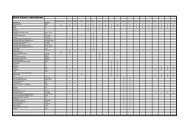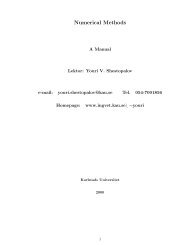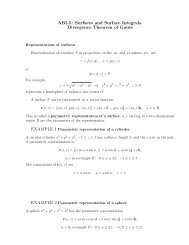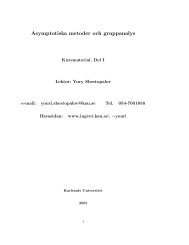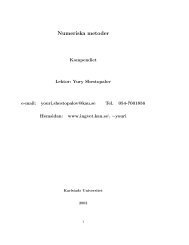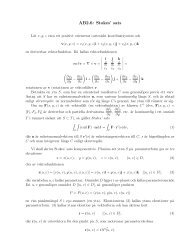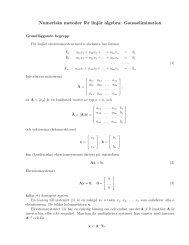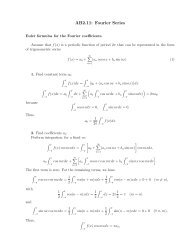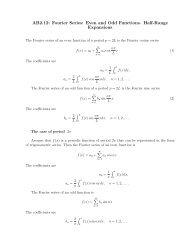Create successful ePaper yourself
Turn your PDF publications into a flip-book with our unique Google optimized e-Paper software.
or, in other notation,andorL = {l nj } ∞ n,j=1, l nj = 0, n ≠ j, l nn = 1 , n = 1, 2, . . . ,n⎛⎞1 0 . . . 0 . . .0 2 . . . 0 . . .L −1 =. . . . . . . . . . . . . . .⎜⎟⎝ 0 . . . n 0 . . . ⎠. . . . . . . . . . . . . . .L −1 = {l nj } ∞ n,j=1, l nj = 0, n ≠ j, l nn = n, n = 1, . . . .that play an important role in the theory of integral operators and operator-valued functionswith a logarithmic singularity of the kernel.Theorem 44 L is a linear bounded invertible operator acting from the space h p to the space h p+2 :L : h p → h p+2 (Im L = h p+2 , Ker L = {∅}). The inverse operator L −1 : h p+2 → h p , is bounded,p ≥ 0 .✷ Let us show that L acts from h p to h p+2 and L −1 acts from h p+2 to h p . Assume that a ∈ h p .Then, for La we obtain∞∑a n∞∑∣∣ ∣2n p+2 = |a n | 2 n p < ∞.nn=1n=1If b ∈ h p+2 , we obtain similar relationships for L −1 b:∞∑∞∑|b n n| 2 n p = |b n | 2 n p+2 < ∞.n=1n=1The norm ‖La‖ p+2 = ‖a‖ p . The element a = L −1 b, a ∈ h p , is the unique solution of the equationLa = b, and ker L = {∅}. According to the Banach theorem, L −1 is a bounded operator. ✷Note that ‖L‖ = ‖L −1 ‖ = 1 andL −1 L = LL −1 = E,where E is the infinite unit matrix.Assume that the summation operator A acting in h p is given by its matrix {a nj } ∞ n,j=1 andthe following condition holds:∞∑n=1 j=1∞∑ n p+2Then, we can prove the following statement.j p |a nj| 2 ≤ C 2 < ∞, C = const, C > 0.Theorem 45 The operator A : h p → h p+2 is completely continuous73



